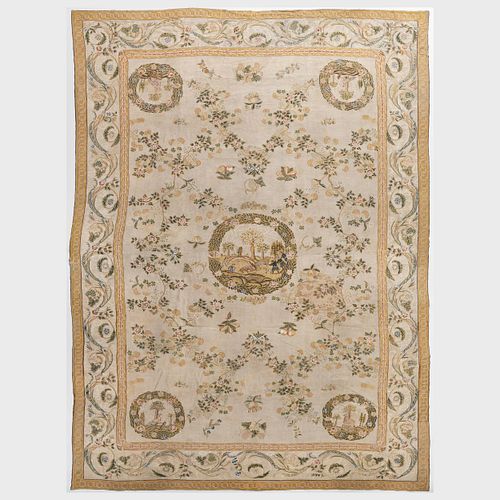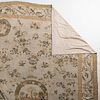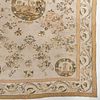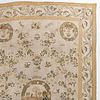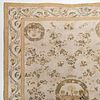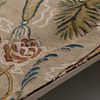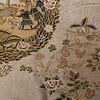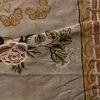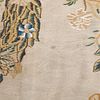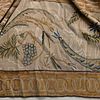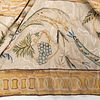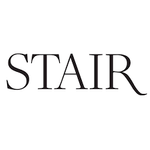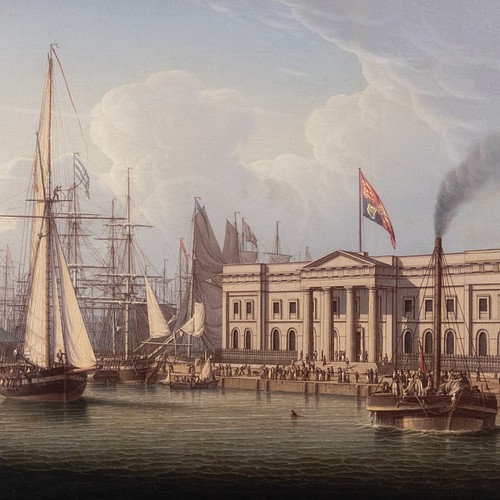Russian 'Bessarabian' Flat Woven Carpet
About Seller
549 Warren St
Hudson, NY 12534
United States
With a focus on curated sales of modern and traditional furniture, decorations and fine art, Stair has been selling interesting things from interesting people with a unique, sophisticated twist for over twenty years. We are innovative in our approach to marketing and online services, providing a hig...Read more
Two ways to bid:
- Leave a max absentee bid and the platform will bid on your behalf up to your maximum bid during the live auction.
- Bid live during the auction and your bids will be submitted real-time to the auctioneer.
Bid Increments
| Price | Bid Increment |
|---|---|
| $0 | $25 |
| $200 | $50 |
| $500 | $100 |
| $3,000 | $250 |
| $5,000 | $500 |
| $10,000 | $1,000 |
| $30,000 | $2,500 |
| $100,000 | $5,000 |
About Auction
Apr 25, 2024
Our April Fine sale brings together an exemplary group of British, European and American fine and decorative arts that spans centuries of stylistic and aesthetic movements across many collecting categories. Gallery preview times in Auction Information. STAIR internetrequests@stairgalleries.com
- Lot Description
Probably Imperial Tapestry Factory, Saint Petersburg.
Approximately 19 ft. 9 in. x 14 ft. 4 in. Lined.
Related Works: Mayorcas Collections, Christie's London, 12 February 1999, lot 360; a Louis XVI (1760-90) pastoral tapestry cushion.
Note: George II needlework table carpet of circa 1740, illustrated in Mayorcas M.J., English Needlework Carpets 16th-19th Centuries, Leigh-on-Sea, 1963, pl. 35 and p. 41, now at Anglesey Abbey (The National Trust), Lode, Cambridge. The design of this carpet apparently draws on several sources for inspiration. The motif of a pictorial vignette is found in embroideries, tapestries, and carpets from earliest times; however, the naturalistic and pastoral nature of these vignettes, enclosed within a laurel wreath, finds its closest parallel in 18th century French furnishings, such as tapestry seat covers (see related works field). Birds in a pastoral landscape were also a popular conceit in 18th century French tapestries and were copied in other mediums, for example needlework table carpets (see related works field). The inspiration for the delicate treillage of flowering stems which meander across the field may be from 18th century English carpets, such as the Moorefield's carpet of 1775, in the Tapestry Room at Osterley Park, London or the Axminster carpet (1765-70) in the State Bedroom at Blicking Hall, Norfolk, see Sherrill, Sarah B., Carpets and Rugs of Europe and America, Abbeville Press, 1995, pl.187 and pls. 205, 206 and 207 respectively; alternatively, the weavers may have been looking at 18th century French or English dressmaking silks, which probably would have been more readily available to them. During the mid-18th century, fashionable silks often employed the device of meandering flowering stems or flower sprigs against a white patterned ground which imitated lace or watering (moire), see Spink and Son Ltd., The Art of Textiles, exhibition catalogue, December 1989, pic. 185-188, pp.134 & 135 for examples. PI.185, an English Spitalfields silk, illustrates an example on a watered ground; the weavers of the present lot have executed a delightful visual pun as, whilst the moire effect in the border (created with supplementary wefts in white cotton) echoes these fashionable silks, within the vignettes it has been used to create cloud-like shapes above the landscape. The use of knotted pile to create the leaves on the trees also shows a certain playfulness on the part of the weavers. Documentation on the output of the various weaving centers in Russia, the Ukraine and Moldova is sparse and does not enable us with any certainty to attribute particular carpets to a particular workshop. However, we do know that the Imperial Tapestry Factory was established by Peter the Great (reigned 1682-1725) in St. Petersburg, Russia in 1716 and that it produced tapestries as well as flat-woven and knotted pile carpets for the court. The Russian workers were trained by weavers from the Gobelins manufactory in Paris and during the 18th and early 19th centuries, their output reflected the influence of the French fashions favored by Peter the Great and his successors. In addition, several estate workshops were set up by wealthy landowners, to produce carpets and other furnishings; these were mainly in the province of Moscow but also in Kursk, Vornonezh, Tambov and Nizhni Novgorod. one of the earliest of these documented is that set up by Prince Nikolai Borisovich Yusupov in 1787 on his estate in the Khotmyzh district of Kurskin eastern Russia, which operated until 1831 and produced carpets for the Imperial family and Russian nobility as well as for export. With the lack of documentary evidence to support specific attributions, traditionally, pile weavings whether from Russia, the Ukraine or Moldova have been given the moniker of "Ukrainian'; whilst flat woven carpets are traditionally described as "Bessarabian': Please see Sherrill, op. cit., pp.280-289 for further discussion of the Russian and related carpet weaving industries. Whilst inspiration for the design of this carpet may have come from diverse sources, the motifs also share a realism and immediacy which suggest the designer and weavers were familiar with the flora and fauna and landscape which they depict so charmingly. The light, fresh coloring and summery theme of the carpet, coupled with the flat woven technique, suggest this piece was made for use during the summer months, probably on the owner's country estates; as a flat weave it would also have been easy to store during the winter months, or indeed to travel with. The scale and sophisticated coloring of the piece and the exceptionally fine quality of the weaving suggest production by an established workshop with trained weavers; whilst the themes may be rustic, the execution is anything but. As discussed above, whilst not able to attribute pieces to specific workshops with certainty, the quality of the present lot certainly indicates, that if this is not the output of the Imperial Tapestry Manufacture, at the very least it must have been produced in the workshops of a sophisticated nobleman such as Prince Nikolai Borisovich Yusupov.
Condition
Scattered staining, wear and areas of reweaving. Staining on the lining. Fine quality.
Notwithstanding this report or any discussion concerning condition of a lot, all lots are offered and sold "as is" in accordance with our conditions of sale.
- Provenance
Sold Sotheby's London, December 8, 2004, Lot 27.
The Collection of Ann and Gordon Getty.
- Shipping Info
-
COLLECTION FROM STAIR:
We suggest requesting a quote for packing and shipping prior to bidding on an item, as you will be responsible for collection or shipping if you are the successful bidder.
We are open for pickups Monday through Friday, from 9:30am to 12pm and again from 1pm to 4:30pm. Please call us at 518.751.1000 to schedule collection. We ask that you collect your items or make collection arrangements within 10 days of your purchase.
Below is a list of shippers our clients use on a regular basis, but feel free to use your shipper of choice.
For smaller items that can be boxed and shipped:
UPS Store #4541 230 Kings Mall Court Kingston, New York 12401 T: 845.336.4877 F: 845.336.3832 E: store4541@theupsstore.com
UPS Store #5539 160 Fairview Avenue Hudson, New York 12534 T: 518.828.8777 F: 518.822.8727 E: store5539@theupsstore.com
UPS Store #4861 6565 Springbrook Avenue Rhinebeck, New York 12572 T: 845.876.3357 F: 845.876.3524 E: store4861@theupsstore.com
For furniture and other large items:
Meticulous Inc. T: 845.256.7047 F: 845.256.7039 E: meticulousmovers@live.com
Sure Express 1-800-335-9996 judy@sureexpress.com
Worldwide Shipping:
James Bourlet, Inc. T: 718.392.9770 F: 718.392.2470 www.bourlet.org
Cadogan Tate Fine Art Worldwide Fine Art Logistics T: 718.706.7999 F: 718.707.2847 E: fineartny@cadogantate.com www.cadogantate.com.
When arranging collection with your shipper, please ask them to email BOL@stairgalleries.com to submit a Bill of Lading and request a pickup time 48-hours in advance.
-
- Payment & Auction Policies
-
Available payment options
-
-
- Buyer's Premium



 EUR
EUR CAD
CAD AUD
AUD GBP
GBP MXN
MXN HKD
HKD CNY
CNY MYR
MYR SEK
SEK SGD
SGD CHF
CHF THB
THB